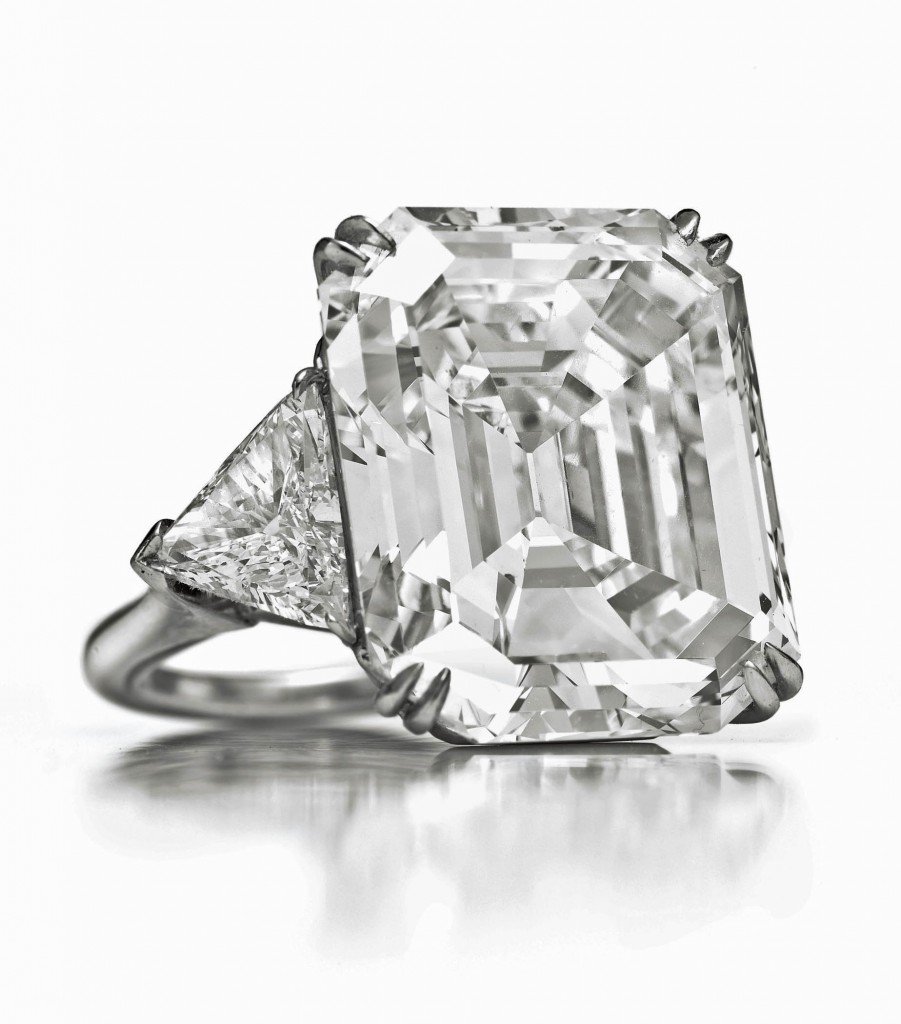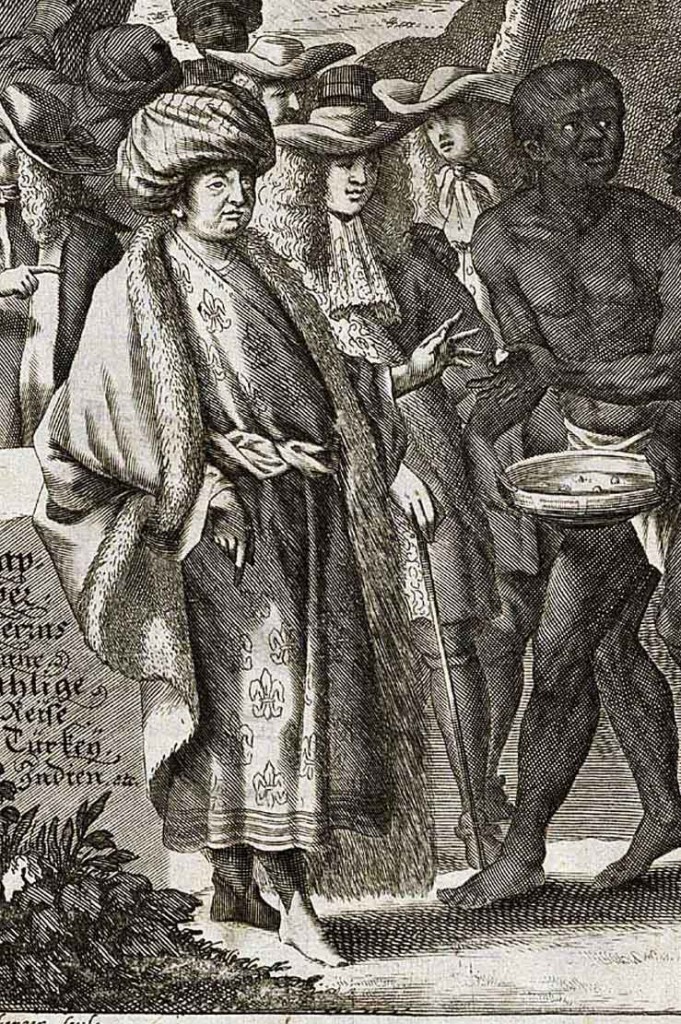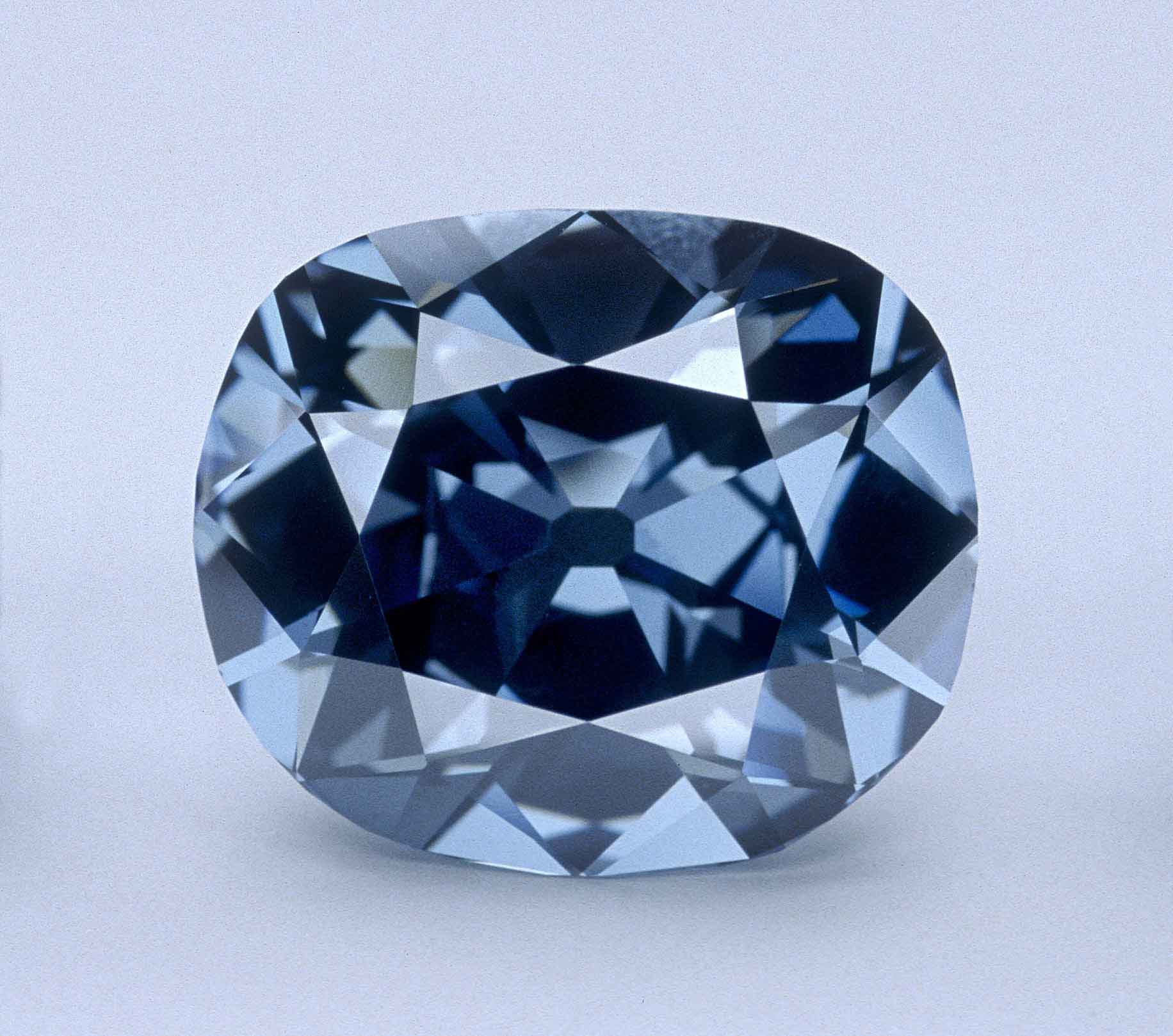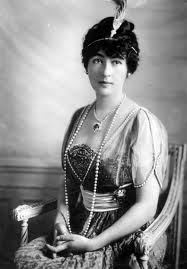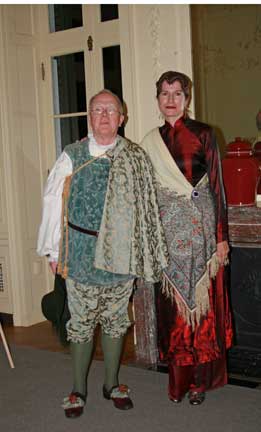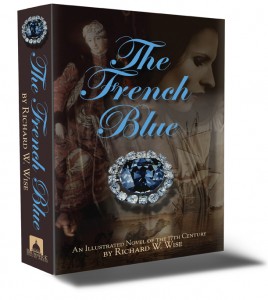By Richard W. Wise, G.G.
©2010
(portions originally published in 2008)
Another Auction Record? Well Not Quite:
On Tuesday, Christies sold a 27.03 carat DVVS1 cushion cut type IIa diamond for 3.55 million or $131,502 per carat. In a fit of salesman-like overstatement, Rahul Kadakia, referring to a 30 carat D-Flawless type IIa that sold last year for $130,000 per carat, stated that “This represents a 45% increase in the value of top diamonds in just twelve month’s time.” While it is true that a flawless diamond will command a significant premium over a mere VVS, Kadakia is ignoring recent history. At a Sotheby’s Magnificent Jewels auction held in New York on April 17th, a 24.42 carat D color Internally Flawless diamond sold for 3.6 million or better than $148,443 per carat. One day earlier at Christies another rectangular step cut diamond weighing 27.91 carats (pictured above left) sold for 4.04 Million or $145,933 per carat.
Collectors Paying Big Premiums for type IIa diamonds:
Sales talk and hyperbole aside, Type IIa diamonds are regularly knocking down auction records. Gems of this type are often called “Golconda” diamonds after the famous Indian mines that supplied a majority of the world’s diamonds until they were mined out in the early 18th Century. Collectors, particularly Europeans are willing to pay high premiums for these rare gems and for good reason.
Most of the world’s big name diamonds, those mined before 1725, the Koh-I-Noor, The Sancy and for that matter, The Hope diamond came from the fabled diamond mines of India, all are type II diamonds.
Type IIa is a rare type of diamond that contains no measurable amounts of Nitrogen. Nitrogen is the impurity that imparts the yellow color in diamonds. As a result “white” diamonds of this type tend to be colorless (D-F) colors and have few inclusions. (see GemWise:http://www.thefrenchblue.com/rww_blog/?p=29
Type IIa diamonds have unique characteristics. Stones of this type are famous for their exceptional lack of color, a color that goes beyond D and is sometimes referred to as super-D.
“…the old Golconda stones were by comparison ‘whiter than white.’ Place a Golconda diamond from an old piece of jewelry alongside a modern recently cut D-color diamond, and the purity of the Golconda stone with become evident.”
Benjamin Zucker; Gems & Jewels; A Connoisseur’s Guide
Type IIa diamonds have also been found in Brazil and at South Africa’s Premier Mine. It is estimated that only about 1% of the world’s diamonds are type IIa. The auction houses tend to lump together all type IIa stones, but be warned; not all type IIa diamonds are created equal. It is not enough that a stone fits the scientific definition. A true Golconda or perhaps I should say Golconda-type gem is not only “whiter than white”, diamonds of this type have other characteristics that contribute to their unique beauty, characteristics that sets them apart from the common herd.
Gems of The Finest Water:
Prior to the invention of modern terminology, exceptionally fine diamonds were referred to as “gems of the finest water”. The “term” water goes back to at least the Seventeenth Century. Water combines two concepts; color and transparency. For the purposes of rhyming I have renamed this later quality crystal and include it along with color, clarity and cut as one of the “Four Cs of Connoisseurship”. For a gem to be truly considered fine it must have both exceptional color and crystal so “super-d” too refers to more than just the total absence of color:
“This designation (super-d), one that sounds about as romantic as a name-brand motor oil refers to antique diamonds from India’s legendary Golconda mines—stones that are reputed to exhibit an extraordinary transparency.”
Richard W. Wise; Secrets of The Gem Trade, The Connoisseur’s Guide To Precious Gemstones
The True Blue White Diamonds
Type IIa diamonds have yet another characteristic, one that is not well understood or even well known among gem professionals; under certain conditions the stones will emit a blue glow in daylight.
The mechanism that produces this phenomenon is not well understood but it is not ultra violet fluorescence. About one third of all diamonds fluoresce blue under ultra-violet light. A few of these, diamonds with very high fluorescence, will actually appear milky or foggy, i.e. lose transparency in daylight. Golconda-type IIa diamonds, rarely possess fluorescence in any meaningful degree:
In a paper presented in 1975 at the 15th International Gemmological Conference, gemologist and author Herbert Tillander made the following observations:
“This type (type II) includes all natural blue diamonds, the only current source of which is the Premier Mine and some really blue-white stones without fluorescence.”
“Type II diamonds in general do not fluoresce although they give a bluish afterglow.”
Herbert Tillander, The Hope Diamond and its Lineage, p. 7
The problem is that the blue glow is quixotic and unreliable; Like the famous green flash at sunset that is sought, usually after a couple of Margaritas, by Caribbean vacationers, this phenomenon refuses to dance to the gemologist’s tune.
“Here, in the afterglow of day, we keep our rendezvous beneath the blue And, in the same and sweet old way I fall in love again as I did then.”Twilight Time,
The Three Suns
My love affair with this curious phenomenon began at about 2:30 one sunny late June afternoon in the Berkshires. A client and I were comparing two 10 carat type IIa diamonds. Both had GIA certificates, both graded D-Flawless with no fluorescence; one, a modern radiant and the second an Old European, said to be an old Golconda stone that looked like the Regent’s younger sibling. We placed the two together in the afternoon sun, suddenly a phenomenon like a blue haze appeared to dance above the old cushion, while the modern cut stone just sat quietly.
“…the never failing test for correctly ascertaining the water is afforded by taking the stone under a leafy tree and in the green shadow one can easily detect if it is blue.”
Jean-Baptiste Tavernier, 1689
The old Golconda diamonds exhibited these three characteristics, ultra-colorlessness, a high degree of transparency and, if Tavernier is to be believed, a delicate blue glow. Tavernier as quoted above bought all his diamonds in India. Given his statement it would seem to follow that in the original meaning of the term, a blue white diamond was not, as most experts believe, a blue fluorescent stone but rather a non-fluorescent Golconda diamond.
“The Regent possesses that unique limpidity characteristic of so many of the finest Indian diamonds together with a beautiful light blue tinge.”
Ian Balfour, Famous Diamonds
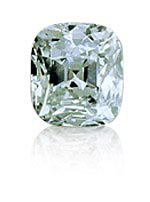 Balfour gives the following description of the 135.92 carat Queen of Holland diamond (pictured left)
Balfour gives the following description of the 135.92 carat Queen of Holland diamond (pictured left)
“Yet there are experts who, after examining it think that the ‘Queen of Holland’ is a typical Golconda stone. It has been classified as an ‘intense blue’: although it is a white diamond it does possesses a definite blue tint, rather like the colour of cigarette smoke. The Gemological Institute of America has graded the ‘Queen of Holland’ as ‘internally flawless’ and ‘D’ colour…”
Ian Balfour, Famous Diamonds
Very little of any information about Golconda diamonds exists in the current or historical literature. This explains why so few experts are aware of Golconda-type IIa diamonds and their characteristic beauty marks. Specialists that I consulted, at both Christies and Sotheby’s, were totally unaware of the phenomenon of the blue glow. Perhaps this is because, in at least some cases, this ethereal phenomenon is, as I have said, quixotic. It only appears under certain as yet indefinable conditions. It can be seen in sunlight and most gem experts, particularly those in New York, don’t get out much and when they do in the polluted haze that hangs over The City, perhaps the phenomenon is not visible at all.
Mystery Solved?
I had a conversation with Tom Moses who is GIA’s point man on grading fancy color diamonds. Finally a living person other than myself who has seen this affect. Moses is indeed familiar with the blue phenomenon which he describes as the Tyndell Effect similar to the affect that makes the sky blue. This same cause was suggested by Fancy Color diamond specialist Stephen Hofer in a conversation I had with him two years ago.
According to Moses, Type IIa diamonds usually do not fluoresce or if they do, the fluorescence is so weak that it is not reported on GIA’s grading reports. The blue glow is not at all characteristic of a specific location; Moses has seen it is Type IIa diamonds from South Africa, Brazil and Russia. Only a small percentage of type IIa diamonds exhibit this blue glow.

